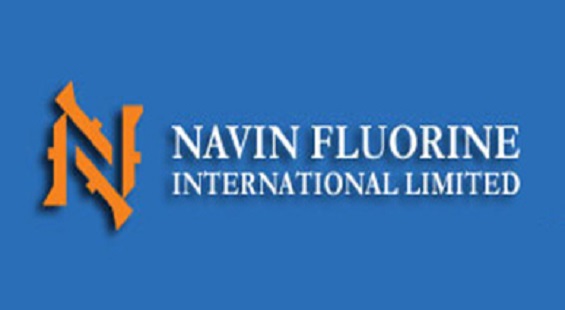The stock has delivered a whopping ~150% returns over the last one year and a large part of the rerating is attributed to greater visibility in the CRAMS segment.

CRAMS business, which constituted ~20% of Navin Fluorine International’s (NFIL) FY20 revenue is the fastest growing segment for the company. The stock has delivered a whopping ~150% returns over the last one year and a large part of the rerating is attributed to greater visibility in the CRAMS segment.
While consensus revenue estimates for CRAMS are more or less similar (~30-35% revenue CAGR over FY20-23E), key variable is the valuation multiple. We are addressing the valuation point wherein we have done detailed comparisons with global CROs/CDMOs in order to justify the valuation. We have come up with some interesting observations (mentioned below), which give us the confidence that CRAMS is a multi-year story & specifically for NFIL we believe that premium multiple is justified on the back of its journey to become ~USD100mn CRAMS business in FY25 (our estimate) & continued growth thereafter. NFIL is our top pick in the specialty chemicals coverage universe with a target price (TP) of Rs3,400, indicating an upside of 27% from the CMP.
Robust financial track record of Asian CRO/CDMOs: While there are select established players in CRAMS in India, companies in other Asian countries like China, Korea etc have delivered robust growth. Our data set of key Asian CROs/CDMOs shows that they have grown their revenue and EBITDA by ~32% and ~42%, respectively on CAGR basis over FY17-20. Expected revenue and EBITDA CAGR over FY20-23E are also healthy at ~34% and ~36%, respectively. EBITDA margin of this data set as on FY20 was 30% vis-à-vis ~19% for USA-based companies. Lonza’s CDMO EBITDA margin for FY20 stood at ~28%.
USA-based companies are expected to grow at ~6% and 9% CAGR in terms of sales and EBITDA, respectively over FY20-23E. While lower growth factor in their size compared to Asian players, we believe global innovators & even mid-small pharma companies are increasingly moving towards Asian CRAMS players considering cost and time efficiencies.
Engaging with CRAMS players help companies reduce both time and cost: One of thecommon pushbacks from the investors is regarding sustainability of EBITDA margin for NFIL. We believe that current margin is sustainable. As per industry sources, companies save ~1/3rd of the time across each trial phase by engaging with a CRO. Factors like the rising cost of R&D, profit pressure due to patent expirations and the need for higher flexibility have lowered the ability of big pharma companies to incur large R&D related fixed costs.
Outsourcing increases the variable R&D cost component, thereby leading to greater flexibility to shift strategic and development priorities in response to market conditions. R&D IRR of pharma companies has declined significantly over the last decade and hence companies will continue to rely on CRAMS players in order to optimize returns and time.
NFIL can become ~USD100mn CRAMS business by FY25: While NFIL’s CRAMS size is very small (~USD28mn as on FY20) compared to Asian peers, we believe that the company is following in their footsteps and could reach ~USD100mn by FY25 (14 years after entry). Hangzhou Tigermed, China’s leading CRO took 11 years to cross USD100mn sales.
Similarly, Asymchem clocked USD100mn revenue after 16 years. We believe that USD100mn revenue is an important milestone as it certifies the company’s ability to provide specialized services at an affordable pricing at a large scale. After clocking USD100mn, Hangzhou Tigermed & Asymchem grew their revenue ~4x in the next 5 years. Other companies like Samsung Biologics, Wuxi Biologics & few others have delivered even better results after clocking USD100mn revenue. NFIL’s core competence in fluorination will open various new opportunities for the company to deliver robust growth in the future.
Valuation and outlook: NFIL is our top pick in the specialty chemicals coverage universe with a potential upside of ~27% from the CMP. Our TP is based on FY23E EPS and PE of 37x. NFIL will continue to trade at premium valuation led by outlook on CRAMS. Asian CRAMS companies are trading at ~74x P/E and ~59x EV/EBITDA on FY23E whereas USA based companies are trading at ~20x PE and ~14x EV/EBITDA on FY23E. Salience of fluorine is on the rise and we like NFIL’s strategy to focus on complex end of the fluorination. While CRAMS is a multi-year opportunity in our view, specialty chemicals segment of NFIL is also expected to drive growth in the next 3-5 years.
CRAMS Global Comparison - Robust growth by Asian companies
While there are select established players in CRAMS in India, companies in other Asian countries like China, Korea etc. have delivered robust growth in the past. Our data sets for some of the key Asian CROs/CDMOs show that they have grown their revenue and EBITDA by ~32% and ~42%, respectively on CAGR basis over FY17-20. Expected revenue and EBITDA CAGR over FY20-23E are also healthy at ~34% and ~36%, respectively. EBITDA margin of this data set as on FY20 was 30% vis-à-vis ~19% for USA-based companies. Lonza’s CDMO EBITDA margin for FY20 stood at ~28%. USA-based companies are expected to grow at ~6% and 9% CAGR in terms of sales and EBITDA, respectively over FY20-23E. While lower growth rates factor in their size compared to Asian players, global innovators and even mid-small pharma companies are increasingly moving towards Asian CRAMS players on account of cost and time advantages
Subscribe to our newsletter & stay updated.